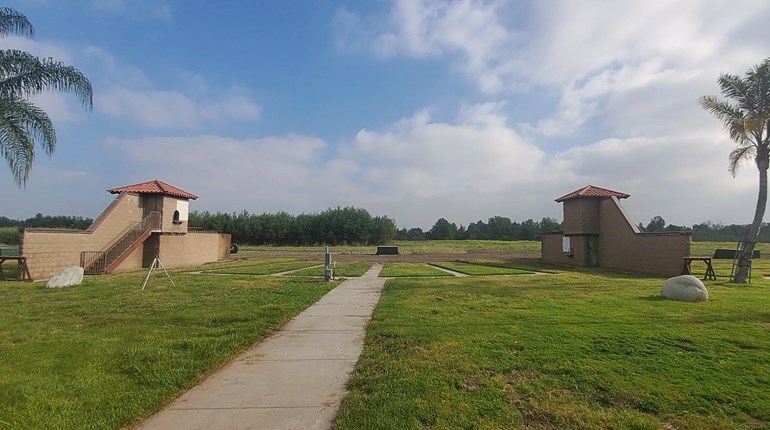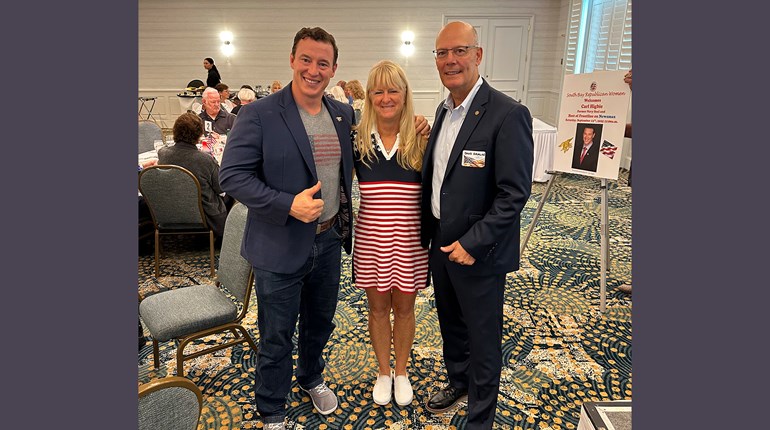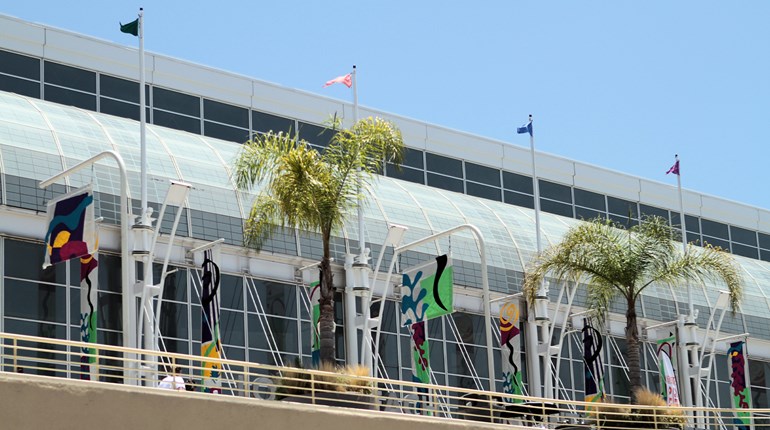
I grew up in a California that no longer exists. My California was one Neil Diamond once sang of:
L.A.’s fine, the sun shines most the time and the feeling is “lay back” Palm trees grow and rents are low But you know I keep thinkin’ about Making my way back I grew up in a beach community: Santa Monica. If there were hunters there, it was not something anyone talked about. In the 1970s, if you lived in Los Angeles, most people had to watch the then-hit TV show “Dragnet” to get their taste of California crime.
I did not grow up around guns, and the Los Angeles Times and Mad Magazine had dutifully told me that gun owners were crazy.
All that changed in the late 1970s. Like in so much of America, violent- crime rates were increasing then and peaked at about 1980. Two different couples that I knew had become victims of home invasions; both were profoundly traumatic events. Worse, the L.A. Police Department did not even run prints from one of the crime scenes; gang rape and robbery just were “not important enough crimes.” Also, my wife had several relatives and friends who had been raped and bludgeoned to death.
In 1981, I bought my first firearm, a Colt Government Model 1911, from Martin B. Rettig, Inc. in Culver City. I had recently married and seeing a map of felonies in our neighborhood was enough to wake me up. There was a 15-day-waiting period for handgun purchases while the California Department of Justice ran a background check. I was slightly annoyed at having to wait to pick up my Colt, but I spent the time reading through California statutes and case law about gun possession and carrying. I discovered that most of what the Los Angeles Times had been telling me about gun laws was false.
I tried to get a concealed-carry license. The Santa Monica Police Department did not exactly laugh at me, but it was apparent that I was doing the equivalent of reporting an alien abduction. Still, gun ownership was generally accepted. The free paper, The Recycler, had gun ads, both used and new. The H&K 91 was $499 new; an AR-15 with the cute Colt 3x scope was $419. (Even the anti-gun Los Angeles Times had classified ads for private party gun sales!) When I moved to the Bay Area for a job in 1982, I found that even there, gun ownership was generally accepted. I drove much of the length of California in 1984 with an AR-15 in the window of my SUV without a word said, or even odd looks. Gun ownership was a harmless hobby in most people’s eyes.
But then all hell broke loose. A mentally ill drifter with a long criminal history used his government disability checks to buy guns and ammunition. Eventually, he snapped and opened fire in a Stockton schoolyard. He murdered five children and wounded dozens more. The harmless possession of semi-automatic firearms was suddenly evidence that you might be a mass murderer. (The state’s Roberti-Roos Assault Weapons Control Act of 1989 had originally been introduced to disarm not mass murderers, but drug gangs in California’s ghettos.)
From then on, it was a continual battle to establish that, just because I owned a gun, I was not a bad person.
 The laws became increasingly difficult. A man who’d been served divorce papers went immediately to a gun store in Sacramento, the state capital, bought a shotgun and murdered his wife at work. The legislature was in session, so long guns were added to the waiting period and the background-check law.
The laws became increasingly difficult. A man who’d been served divorce papers went immediately to a gun store in Sacramento, the state capital, bought a shotgun and murdered his wife at work. The legislature was in session, so long guns were added to the waiting period and the background-check law.
The legislature passed law after law from then on. All firearms transfers (with a very few exceptions within families) required a background check and transfer through a licensed dealer or law-enforcement agency. You needed to keep firearms locked up and out of reach of minors. Purchasing a firearm required you to go through a class to obtain a “Firearms Safety Certificate” (FSC). Moving to California? You must register your guns within 60 days.
You need proof of where you live to buy a handgun—utility bill, notarized renter’s lease, car registration, driver’s license. Then it became really silly. Starting in 2001, a dealer could not transfer a handgun unless it was certified as safe.
California, of course, had its own handgun-safety test that was—and still is—unlike any industry standard. Manufacturers had to submit models for tests every year; if the company saw limited likely sales in California, why would they pay to have them tested? There were still handguns for sale; in fact, apparently still too many for the state government, which soon ordered the removal of three handguns from the “safe” list for each one added.
How does a handgun get onto the “Handguns Certified for Sale” list? Revolvers do not need to pass a test—I guess only semi-automatic handguns are dangerous now. A pistol must have a magazine disconnect. Some people make persuasive arguments that this may be bad on a tactical pistol, but let’s give California the benefit of the doubt. It must also have a loaded chamber indicator (LCI), and text that is engraved or stamped explaining its function in letters at least 1/16 of an inch high and contrasting with the finish of the gun. California seems to want guns made for people who can read but never bothered reading the manual.
The gun must fire 600 rounds without a malfunction. Why is guaranteeing that guns fire when you pull the trigger a safety concern? I would expect the “gun-safety” crowd (as gun banners have rebranded themselves) would prefer that manufacturers only sell handguns that do not fire, but their real motivation here seems to be just to make this process expensive and difficult.
Once this test is completed, there is a drop-safety test. The gun is dropped 101 centimeters onto a concrete slab with the hammer cocked and a cartridge in place. Guns with external hammers have to be cocked. Something like the Colt 1903 hammerless (where the hammer is internal but hidden) apparently can be dropped without being cocked. “Minimal damage” to the gun will not disqualify it; if it will no longer set off a primer after five drops, it is deemed unsafe.
“In Baird v. Bonta, I was called as an expert witness concerning the history of American gun laws. I had fun demolishing California’s ‘expert’ witness, who quoted laws that actually did not exist.” – Clayton Cramer
Today, California requires all new models of handguns (those not already on the safe-handguns list) sold to use “microstamping,” a problematic and patented technology that is supposed to print an array of characters used to identify the pistol on its firing pin so that it will leave an impression on the primers of cartridges when the gun is fired. (Revolvers are not subject to this rule.) Theoretically, when police find a small pile of cartridges at a gang shooting, they should be able to put those cartridges under a microscope, get the serial number of the gun, pull up the address of the last registered owner and arrest the bad guy! Too bad the vast majority of guns used in crimes are either stolen or have been illegally sold in a black market. Also, the flawed idea of micro-stamping is predicated on the idea that firing pins on pistols are impossible to change, but, of course, anyone can wipe off the serial number with a file bought in any hardware store. But at least they’ll catch the very dumb criminals.
Then they added another law mandating that, to purchase ammunition, you need a “Certificate Of Eligibility” (COE) that proves you can possess a firearm—one more piece of paperwork and a background check, renewed annually. Another way to purchase ammunition in the state is by undergoing the more commonly used “standard eligibility checks” or “basic eligibility checks.” The standard check pings the “Automated Firearm System” (AFS), which checks for a registered firearm and then it queries the “Armed Prohibited Person System” (APPS) to check if a person is prohibited. It costs $1. The basic check is $19 and functions more like a background check.
If you have a valid COE, why bother doing a background check? Perhaps because it makes gun ownership even harder; after all, it is a complex-enough system that law-enforcement officers have failed the background check. Of course, if the state’s system for keeping guns out of the wrong hands worked, the ammunition would not matter.
I mentioned the amused reaction from the Santa Monica Police Department when I asked about a concealed-carry license. This is one area where California is very unlike most of America. Before the U.S. Supreme Court tossed out “may-issue” licensing regimes in NYSRPA v. Bruen, California had had its “may-issue” concealed weapon law since 1923, when R.T. McKissick, then-president of the Sacramento Rifle and Revolver Club, persuaded the KKK-endorsed governor to sign it as part of a comprehensive gun-control law. McKissick explained at the time that while there was some question as to whether one provision would survive a court challenge, he believed it would have a “salutary effect in checking Tong Wars among the Chinese and vendettas among our people who are of Latin descent.” So yes, California’s gun-control laws literally have a racist history.
The licensing system in California has long invited corruption; for example, again before Bruen, in Santa Clara County (San Jose), a deputy sheriff and members of the sheriff’s campaign committee were indicted for exchanging bribes for licenses. Also, former Orange County Sheriff Mike Carona was indicted for exchanging cash for both licenses and deputy sheriff’s badges. He eventually went to prison.
California decided recently to require a license for open carry. In the resulting lawsuit, Baird v. Bonta (2021), I was called as an expert witness concerning the history of American gun laws. The California attorney general argued that open carrying of firearms had never been generally lawful in the U.S. I had great fun demolishing their expert witness, Professor Saul Cornell, who quoted court decisions and laws out of context and in some cases, laws that did not exist. Best of all, he only charged California taxpayers $500 an hour for his tortured claims.
So why pass laws that do not work? Because this is a war on our rights. California’s legislative bodies are sending a message to gun owners: you are not welcome here. Illegal aliens are welcome; drug addicts shooting up on the streets of San Francisco are fine; shoplifting goods worth less than $950 is no problem ... but gun owners are not okay. In their view, the sooner you figure that out and move your icky self away, the better.
I moved my family to Boise, Idaho, in 2001. The only things that I miss are the weather and the palm trees.
Clayton E. Cramer teaches history at a college in Idaho that prefers anonymity.
California’s Latest Gun-Control Laws
After the U. S. Supreme Court struck down “may-issue” licensing regimes by ruling that the peoples’ Second Amendment rights extend outside their homes, California’s government got particularly busy.
California Gov. Gavin Newsom (D) quickly signed Assembly Bill 1621, expanding what is considered a “precursor part” under existing law and requiring serial numbers on those parts. Further, it expanded the definition of “firearm” for purposes of criminal and regulatory penalties to include “precursor parts.” Finally, it prohibited the possession, transfer, sale or advertising of milling machines that have the sole or primary purpose of manufacturing firearms to anyone other than licensed firearm manufacturers or importers.
The governor also signed Assembly Bill 2571, banning advertising or marketing firearms or ammunition in a way that is “attractive to minors.” This legislation is so broadly worded it will be devastating to conservation, safety and education efforts throughout the state. As this was going to print, the state passed an amendment to this legislation, as part of a budget trailer bill, but it had not yet been signed by the governor.
There isn’t space here to list all of the other gun-control laws the state legislature recently passed. Go to NRAILA.org for up-to-date information.


































